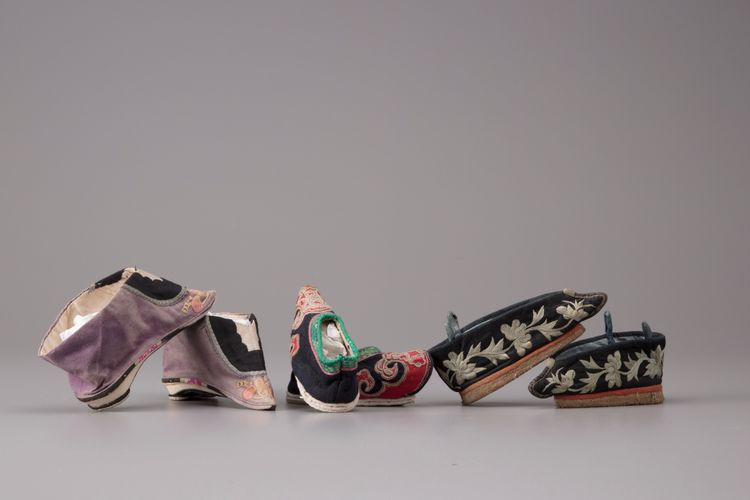Two pairs of lotus shoes and one pair of shoes from the Miao tribe
cotton with silk embroidery and cloth covered soles.
Footbinding is a Chinese practice first documented in the Southern T'ang Dynasty (937-956 AD), although some poetry from the Han Dynasty (206 BC-AD 220) suggests that small feet were culturally preferred before documentation of the custom. The practice itself consists of wrapping the feet with bindings to bend the toes, breaking the bones, and make the front and back of the foot touch. As the practice spread, these bindings became progressively tighter until most women were permanently handicapped and limited in mobility. Concubines and entertainers were originally the only women with bound feet and used the practice for beautification; however, by the Sung Dynasty (960-1279 AD) the practice had spread to all regions and classes of China. Footbinding became a custom necessary for marriage and such a standard that women without bound feet were marginalized. Although practiced and enforced by the majority of Chinese for a thousand years, footbinding was never wholeheartedly accepted in China and gradually came to an end after 1911 with the fall of Imperial China. The practice was completely eradicated after the Communist Revolution in 1949; however, in some rural areas, one can still see elderly women with bound feet.
Condition: some wear and minor fading of colour.

